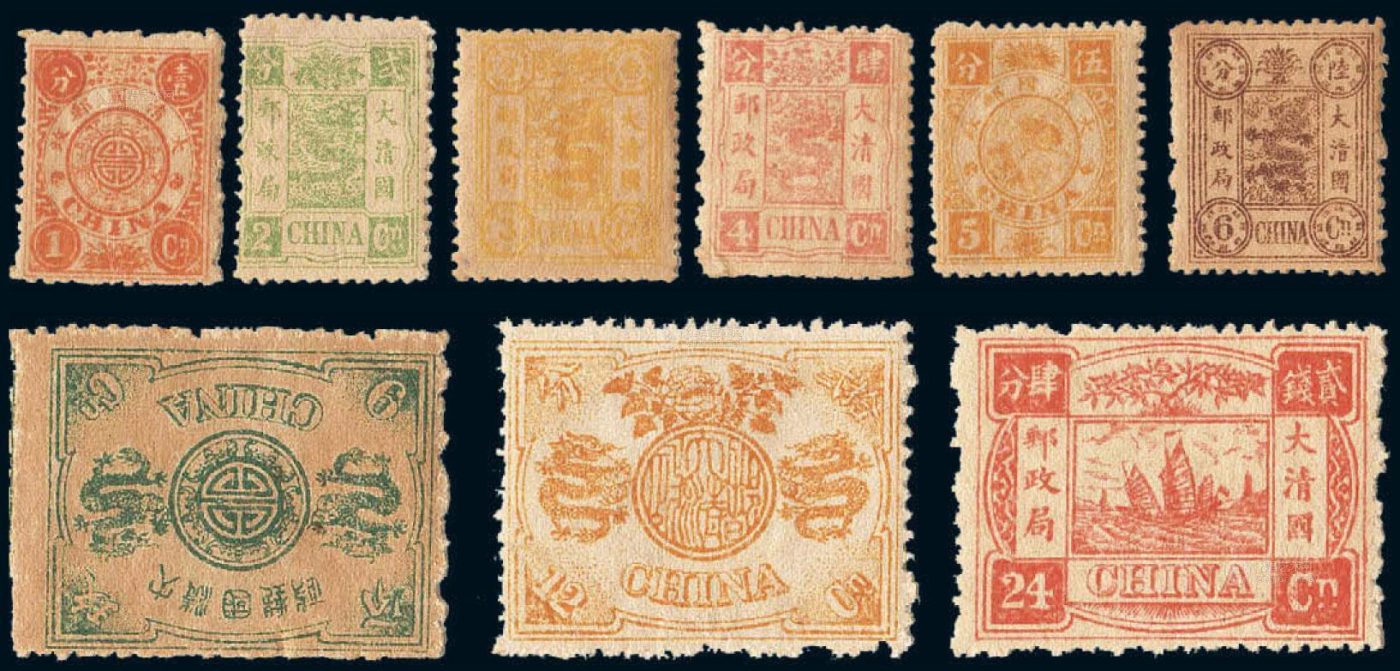Uncategorized
National Memories in a Small Space: A Guide to Collecting Old Chinese Stamps
From the Dragon Stamps of the Qing Dynasty to the rare Stamps of the Cultural Revolution, decoding History on paper
I. Five Golden Ages of Chinese Stamps
Customs and Postal Services of the Qing Dynasty (1878-1911)
The Great Dragon Stamps: China’s first set of stamps, featuring cloud and dragon patterns symbolizing imperial power. They are available in three editions: thin paper, wide border, and thick paper.
Red stamp: Originally a customs tax ticket, the small characters “Dang Yi Yuan” are only 32 in existence and are known as the “King of Chinese Stamps”.
Rare Stamps of the Republic of China (1912-1949)
The inverted printing stamp of the palace gate: The central pattern of the old Beijing version of the sailing boat stamp is printed incorrectly and is listed among the “Four Treasures of the Republic of China”.
Stamps of the liberated areas: “Draft” character stamps of Huainan District (printed on the back of Xinhua News Agency’s draft paper), witnessing the years of war.
The early days of the founding of the People’s Republic of China (1949-1967
Ji 94 Mei Lanfang Stage Art: Toothless Miniature Sheet, A Theme on Peking Opera Masters, hard to come by.
Special 38 Goldfish: A breakthrough in color photocopying technology, as lively as swimming in water.
The Special Period of the Cultural Revolution (1967-1970)
The entire country’s mountains and rivers turned red: Due to an error in map drawing, an emergency recall was carried out. The leaked quantity was less than a thousand pieces, and it was sold for 13.8 million yuan in 2022.
After the reform and opening up (1974-1990)
T46 Geng Shen Monkey Stamp: The first round of zodiac stamps, designed by Huang Yongyu, with a face value of 8 fen, has now appreciated by 200,000 times.
J8 Five-Year Plan: Construction themes become popular for thematic collection.
Ii. A Guide for Beginners to Avoid Pitfalls
Techniques for identifying fakes
Ultraviolet lamp detection of fluorescent inkjet coding (anti-counterfeiting technology after 1992).
Observe the lines of the engraved plate with a magnifying glass (the genuine one has three-dimensional burrs).
Collection suggestions
Starting from JT tickets (1974-1991), they were affordable and had few counterfeits.
Beware of marketing gimmicks such as “gold foil stamps” and “pure gold replicas”.
Storage method
Constant temperature and humidity cabinet (temperature 18-22℃, humidity 40%-60%).
Use acid-free postal bags and do not use plastic sealing (as it is prone to ink adhesion).
Iii. Market Trends and Little-Known Facts
New hot topic
A genuine envelope from the Cultural Revolution (a three-in-one evidence chain of postmark, stamp and envelope).
Northeast Stamp (Special Circulation stamp from 1945 to 1950).
Cold fact:
The “Wanshou Stamp” of the Qing Dynasty was originally designed for Empress Dowager Cixi’s 60th birthday and later became a universal stamp.
In 1980, 95% of the “China-Us Small Sheet” was destroyed for political reasons, and the number of surviving copies is very small.
Conclusion
Old stamps are miniature historical archives, carrying a trio of politics, art and technology within a small space. Collecting is not merely an investment; it is also touching the fingerprints of time.


